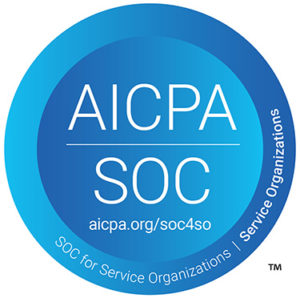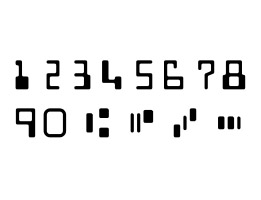North America’s largest retailer of farm and agriculture-related products has a lot of different payment records to deal with — and the SmartSource Adaptive helps keep track of them all
Sections in this Case Study:
1. Main Article (this page) — How Mixed-Batch Capture Simplifies Accounting and CRM
2. Sidebar — Why Electronic Check Deposits Are Especially Vital in the Agriculture Business
![]() Download as PDF
Download as PDF
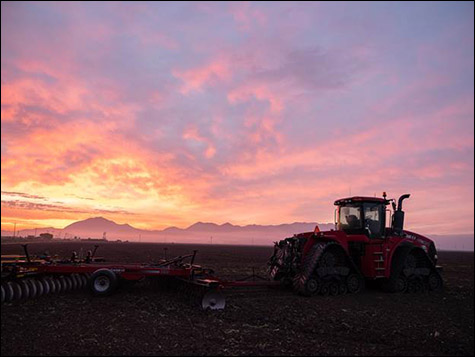
With more than 1,500 locations across the United States and Canada, Nutrien Ag Solutions is a major player in the retail agricultural products business. Since most of its sales are made directly to the individual farmers and ranchers who actually grow our food, there are as many unique business relationships as there are customers. Purchases and payments come at different times, for different reasons, and with different terms. It’s a lot to keep track of, and there’s a lot of paperwork attached.
Starting in 2019, Nutrien embarked on a project to upgrade its back-end systems to better coordinate the receipt of payments, invoices, and any other accompanying documents. A lot more documents needed to be captured and tracked, and the SmartSource Adaptive was chosen for its ability to scan checks and other documents up to full-page size, together in mixed batches.
In this case study, we’ll take a look at three major themes in Nutrien’s technological overhaul:
- How a dual-purpose scanner can reduce overhead and eliminate manual processes;
- The importance of the right software to track data across accounts receivable and
customer management systems; - The unique role of the check, and of remote deposit capture, in the agricultural business.
Merging decentralized databases for payments and customer records
has helped Nutrien improve access and visibility
For many retail businesses in the United States, paper checks occupy a unique role in the payments ecosystem. While credit and debit cards have become overwhelmingly popular for small transactions at the point of sale, the check remains popular for higher-value payments. In fact, while the total number of checks written has continued to gradually decline in recent years, the average value of each check has increased by almost 30 percent – from $1,378 in 2012 up to $1,779 in 2018, the most recent full year of data available.
Mixed-Batch Scanning –
Objectives and Key Lessons
Goal: Replace separate systems used for payments and customer records, with a unified platform that tracks all customers, payments, and related documentation in a single electronic database.
Key Takeaways:
- Attaching payment records directly to customer files greatly simplifies operations.
- When dealing with payments, a dual-purpose check and document scanner helps avoid extra steps, duplicate manual processes, and paying for separate equipment.
- Checks are still frequently a preferred payment method for commercial and industrial purchases, as the fees associated with card payments on these transactions are significant.
For most merchants, high-value payments are handled through the billing office, not at the cash register. Sometimes, though, the nature of a particular business creates an exception. One such example is Nutrien, which operates the largest network of agricultural retail stores in North America, with more than 1,500 locations selling supplies direct to farmers in the U.S. and Canada. More than 82 percent of the company’s transactions in 2019 were checks, a figure that has only fallen to 78 percent in 2020 despite the introduction of a new ACH/EFT portal and the COVID-19 epidemic.
What’s the reason for this strange adherence to paper? You might be tempted to think it’s because farming is an old-fashioned business – but that’s actually not the case at all, according to Lisa Pulst, Nutrien’s accounts receivable lead who is responsible for payments technology.
For high-value purchases,
paper checks aren’t a thing of the past
“Depending on the time of year – right now [in fall], the average size of a check we receive is about $9,000. In December and January, it triples as people pay off balances or prepay for tax reasons,” Pulst says. And for amounts that high, many customers also are glad for the paper trail that a check provides.
Given the high amount per transaction, “We really do not like credit card fees,” she explains. Even at the relatively low rates that Nutrien receives from its processors, fees would still come to hundreds of dollars per transaction. Given the $7.5 billion in check payments that the company accepted in 2019, “It would be a significant hit to our bottom line.”
Nutrien’s relationship with the check led it to become an early adopter of remote deposit capture (see sidebar) at all of its locations in North America. There’s a divergence between what happens on the north and south sides of the border, though: The Canadian operation is in the process of updating its back-end customer management system to a state-of the art platform from SAP, while the U.S. side has a proprietary back-end system that is much more labor-intensive.
“The platform that we use in the U.S.A. was developed by us, for us – but SAP will be the superior product once it’s finished,” Pulst explains. “The goal is to introduce it system-wide, but we are making sure we do it right.”
Separating the wheat from the chaff with mixed-batch scanning
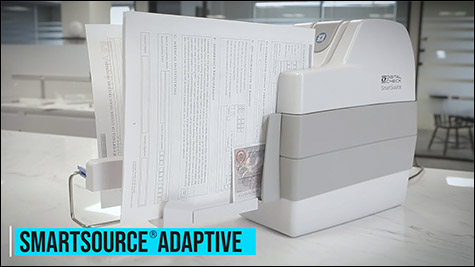
In anticipation of that goal, Nutrien acquired several hundred SmartSource Adaptive scanners to eventually be installed in its U.S. locations. The Adaptive – a large, multi-feed device – is already used in the company’s Canadian locations because of its ability to capture batches of checks and full-page documents together. That’s because the new back-end platform tracks all payments
and customer records together under one system, which eliminates the need for local operators to enter and cross-reference payments and customer records separately.
Each of Nutrien’s U.S. branches is currently equipped with a small SmartSource Micro Elite scanner that’s used to send check images to the central office for deposit. That takes care of the transactional part of the process, but it only really works because the local customer record-keeping is done separately in the company’s U.S. outfit. Once the whole company is standardized on the Canadian system, though, both of those functions will be handled in the same place, so a single-purpose check scanner won’t be enough – and that’s where the Adaptive comes in. Being able to capture and record every document related to the payment process not only gives the central office more visibility; it also replaces a process that’s historically been a mixed bag involving much more manual data entry for the local branches.
“In the U.S., if a customer gives us a check, it’s processed as paper. It’s still a manual, paper-intensive process,” Pulst says. “[Other customer record-keeping] varies by individual branch –
most have paper files, not electronic files. Probably 95 percent keep on-site paper files.”
Since individual branches are allowed local control over their customer record management, accompanying documents like remittances or purchase orders might be captured separately on a flatbed scanner, or simply stored as paper in a filing cabinet. Non-check payments are tracked in a different system. In either case, matching the payment to the correct customer record is very much a manual process. The central office also has records of all payments, but is dependent on the individual location managers for the more detailed customer record-keeping.
On the Canadian side, the introduction of the new SAP platform means complete customer records are tracked together, including all types of payments as well as other documentation.
That’s where the SmartSource Adaptive is a big advantage, capturing mixed batches of checks and remittances, and intelligently grouping them together. Since the main office has electronic copies of all customer records, they’re available for quick access while still allowing the local branches the freedom to manage their own archives in the way they choose.
“Canada has a very different system; it’s very accessible to us internally,” Pulst says. “Our individual locations may still keep paper copies on their own, but it’s their own preference.”
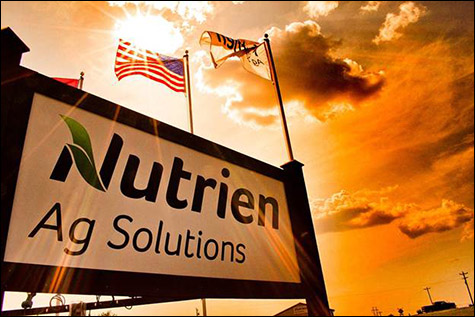
The nature of the agriculture business makes some of that accompanying customer documentation important. Customers frequently have open-ended accounts at their local branches, making scheduled payments, prepaying, or carrying balances, rather than paying for each order individually at the time of purchase. When the payments come in, they’re not always in chronological order, either.
“It’s almost always a remittance that we’re scanning – we capture invoices along with checks,” Pulst explains. “We’re not always applying a check to the oldest invoice on an account, or to all
items on an invoice. … We could have one invoice with 12 items, or we could have four remittances with one check. They all go into one system.”
On the Canadian side, it’s easy to see why that process works much more efficiently when all of the records are available (to both the local manager and the central office) as electronic copies in
the same database. That’s a big reason why Nutrien is eager to deploy it company-wide.
The Adaptive also helps “future-proof” the company’s back office for additional process improvements that could happen down the line. For example, optical character recognition (OCR) is not currently used on the full-page documents accompanying checks, but the scanner’s high-resolution image sensor could conceivably allow OCR to be done anywhere on either document. The versatile output formats also make it simple to, for instance, export check images in the 200 dpi bitonal format that’s the standard for electronic clearing, while keeping higher-quality images of other documents for archiving.
Eventually, the system will also be able to use intelligent recognition to make the process even easier – reading the MICR line at the bottom of each check, and automatically using the bank account and routing numbers to match the payment to the correct customer. It’s even possible that optical recognition could be used to apply it to the correct invoice, if it matches the exact amount.
“Our ultimate goal will be to have a system that takes the MICR to match to a customer,” Pulst says. “It’s not there yet, but when it’s complete, it will be real top-end system.”
